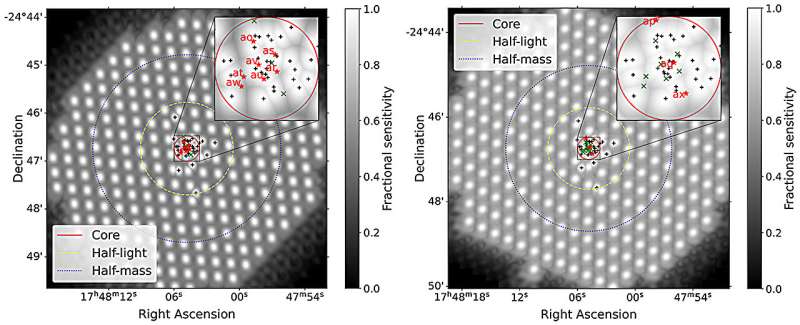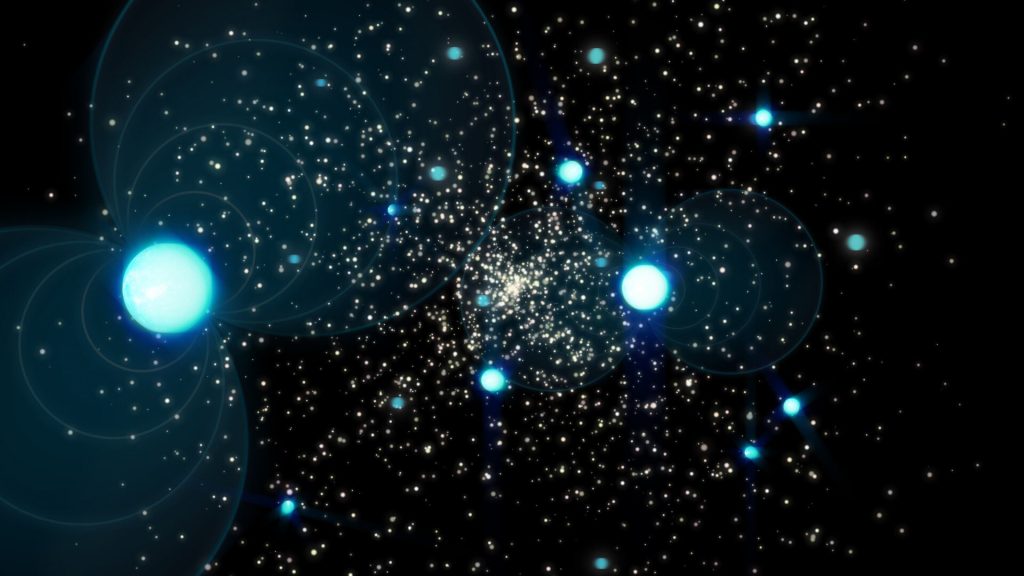Terzan 5, located in Sagittarius, is a dense globular cluster containing hundreds of thousands of stars. Ten rare and exotic pulsars were recently discovered by an international team of astronomers from the National Science Foundation’s National Radio Astronomy Observatory, the Max Planck Institute for Gravitational Physics (Albert Einstein Institute) (AEI), and the Max Planck Institute for Radio Astronomy. Credit: US NSF, AUI, NSF NRAO, S. Dagnello
Astronomers have discovered ten massive neutron stars in the center of the Milky Way galaxy, around the constellation Sagittarius. These stars, called pulsars, are grouped together in Terzan 5, a globular cluster packed with hundreds of thousands of different types of stars.
This paper Published In the journal Astronomy and Astrophysics.
Pulsars are millions (or even billions) of times denser than other stars, spin at high speeds, and emit bright pulses of light from their surroundings. Strong magnetic fieldThey’re landmarks for astronomers to discover. As one of the most densely populated places in the Milky Way, many pulsars in Terzan 5 have evolved into strange and exotic shapes.
Astronomers already knew that Terzan 5 contained 39 pulsars, and a collaboration between the National Science Foundation’s Green Bank Telescope (NSF GBT) and the South African Radio Astronomy Observatory’s MeerKAT telescope has added 10 more pulsars to that number.
“Finding an unusual new pulsar is very unusual, but what’s really exciting is the wide variety of strange ones in a single cluster,” said Scott Ransom, a scientist at the National Science Foundation’s National Radio Astronomy Observatory (NSF NRAO). The discovery was made by an international team of astronomers from NSF NRAO, the Max Planck Institute for Gravitational Physics (Albert Einstein Institute) (AEI), and the Max Planck Institute for Radio Astronomy.
By tracking and timing each pulsar’s rotation rate, the MeerKAT telescope was able to pinpoint each pulsar’s approximate location, which, when matched with NSF GBT’s 20-year-long Terzan 5 observations, revealed strange and exotic details about these stars.

TRAPUM beam tiling of two survey observations of Ter5 (epoch 1 and epoch 2, see text) performed in L-band with MeerKAT on September 5, 2020 (left) and January 6, 2021 (right). Credits: Astronomy and Astrophysics (2024). DOI: 10.1051/0004-6361/202449303
“Without the NSF Green Bank Telescope archives, we would not have been able to characterize these pulsars and understand their astrophysics,” Ransom adds. The archived NSF GBT data allowed astronomers to pinpoint the pulsars’ locations on the sky, measure their specific motions, and see how their orbits have changed over time.
Among the discoveries: Astronomer Two neutron stars have been observed being attracted into each other’s orbit as a binary system. Of the 3,600 known pulsars in the Milky Way Galaxy, only 20 have been confirmed as double neutron star binaries.
When pulsars pair up in a binary system, Gravity They steal matter and energy, one spinning faster, Millisecond PulsarThe pair is a new candidate for the fastest spinning pulsar in a double neutron star system and may break the record as it has the longest orbit for a pulsar of its kind. Currently, the record holder for the fastest spinning pulsar is already Terzan 5. Only future observations will reveal the truth.
In addition to the five binary systems already known in the cluster, astronomers also observed three new unusual pulsar “spider” binary systems, called Redbacks or Black Widows depending on the type of companion star. Companion Star It falls into the orbit of the spider pulsar, where a web of plasma (created by outflows from the companion star due to the pulsar’s energy) fills the space between the two stars, slowly dissolving the companion star over time.
The discovery of these strange pulsars has given scientists a deeper understanding. Globular clustersneutron stars, and even testing Einstein’s theory General theory of relativityOur knowledge of the pulsar category is also expanding: the research team is already making plans to discover even more pulsars with Terzan 5, with the help of volunteers.
Citizen scientists who want to share their excitement about this discovery can Einstein@HomeThe project, led by AEI scientists, has already discovered more than 90 new neutron stars.
For more information:
PV Padmanabh et al., Discovery and Timing of Ten New Millisecond Pulsars in the Globular Cluster Terzan 5, Astronomy and Astrophysics (2024). Publication date: 10.1051/0004-6361/202449303
Provided by
National Radio Astronomy Observatory
Quote: Telescope Tag Team Discovers 10 Strange and Exotic Pulsars (July 16, 2024) Retrieved July 17, 2024 from https://phys.org/news/2024-07-telescope-tag-team-strange-exotic.html
This document is subject to copyright. It may not be reproduced without written permission, except for fair dealing for the purposes of personal study or research. The content is provided for informational purposes only.


